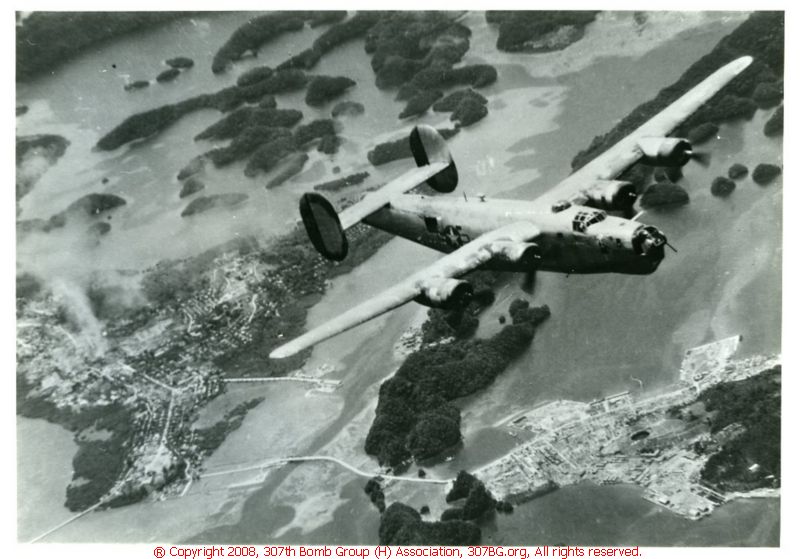The Mission
28 August 1944 Wakde AB, New Guinea to Palau, Western Carolines

On the morning of the 28th, the crew suited up to fly one of the early missions to Palau, Western Caroline Islands. The Navigator and Bombardier were substituted out by an experienced Squadron lead Navigator 1st Lt Paul Duncan and Squadron Bombardier Captain Max Tenton who were finishing up their combat flying before being shipped home. Additionally a 13th Bomber Command operations staff-member 1st Lt John E Sarles, a photographic specialist and experienced navigator volunteered as an observer.
The mission plan of late August 1944 was to bomb radio towers and military buildings on the island of Koror, Palau to support the invasion plan of Peleliu island, slightly to the south in mid September. Koror served as the administrative center of the Japanese claimed islands in the South Pacific, and also recently became the regional command and control for the Japanese Navy after being bombed out of Truk.
The crew had completed a 3 1/2 hour transit with extra fuel loaded in large rubber bladders above the bombs in the bomb bay. Traveling in loose Javelin down formation, with each aircraft at slightly different vertical and lateral positions, the group, consisting of 6 planes from the 372nd, followed by 6 planes from the 371st and 6 more from the 424th bomb squadrons were about ready to tighten up the formation for the IP, initial point of the bomb run. Then they hit bad weather. They spread out per standard procedure, staying with squadron mates but loosening up the formation considerably to penetrate the squall line. On their minds was the aircraft loss from a few days ago. The squadrons pretty much stayed together, but got separated from the group formation. Gordon collected what he could of the group by making two large 360 circles, and announcing it on the radio. The 371st didn’t join up and missed the target to the left, held their bombs for another run, but gave up on it after hitting more weather. The 372nd came in with a straggler from the 371st. This squadron was trailed by the 424th coming from a different direction.
Then came two straggler camera-carrying bombers, ships ‘284 and ‘792 to which we credit filming the demise of poor Dixon’s crew in ‘603.
The Dixon plane navigated perfectly and brought the squadron right in over the middle of the target. Unfortunately right before bombs away Dixon ‘603 took a direct hit from Japanese ground fire – a 70 mm aa cannon.
According to the 372nd Bomb Squadron’s historical entry:
“His ship was hit in the main fuel cell near No 3 engine. The airplane burst into flames immediately after being hit and went into a shallow dive for about 200 yards, then leveled off and the bomb load was salvoed. After the bombs were salvoed, the right wing broke off in flames and the remainder of the airplane fell straight down, flaming. One body was thrown clear of the wreckage. No parachutes were seen to open. In addition to Captain DIXON, Capt Max C TENTON, 1st Lt Paul K DUNCAN, 2nd Lt Arthur D Wilson Jr., T/Sgt George M FEENEY, Donald W ELLIOTT, S/Sgt Hebert L FARNAM, Robert J MANSELL, and Roger W HOLT, were also killed”
Missing in the report was Bombardier/Navigator Observer 1st Lt John SARLES, who worked in the 307th Bomb Group headquarters and accompanied the skipper’s crew to help execute the mission plan.
The ship was thought to have fallen in two main pieces, the Wing and the fuselage. Their fall was captured on approximately 50 or more frames of bomb drop recording film.
